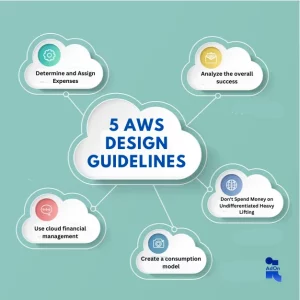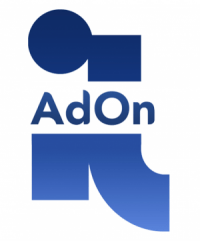Cost reduction is simply one of the numerous benefits that Amazon Web Services provides to its clients. It can be more difficult to manage Amazon’s cost optimization than you previously thought, though. For instance, it could be easier for organizations that “migrated” into the cloud as opposed to those who were “innate” in the cloud. These customers raised the price of operating on-premises systems by adding management, governance, and automation.
Many companies are moving their applications and services to the platform as a service, infrastructure as a service, and software as a service model. Understanding your cloud bill and budget on cloud providers like Amazon Web Services is increasingly crucial as a result of the substantial shift of IT spending to them.
With the development of specific tools, economic models, and cost-cutting best practices, AWS cost management has become a unique area of study. Although Amazon provides a number of benefits over conventional on-premises infrastructure, its inherent flexibility and scalability can lead to unaffordable rates.
If you don’t have a system in place to track where the expenditures are coming from and how to manage them, AWS fees might quickly destroy your profit margins. Costs associated with AWS might be opaque and difficult to track. Over the past several years, many solutions have emerged to assist businesses with cost optimization. In this article, we’ll look at some of the top AWS cost optimization services and third-party vendors’ finest solutions for Amazon cost optimization.
Why is AWS so expensive?
More than 200 services are available on the AWS cloud platform. Tools for cloud optimization might be adaptable, but it can be difficult to predict and manage their expenses.
The main causes of waste and exorbitant charges for AWS cost optimization services are as follows:
- When using services like Amazon EC2, the compute instances are not being fully utilized, hence you are paying for instances that you do not require.
- EBS volumes, snapshots, load balancers, and other resources are expensive even when not in use.
- Spot instances and reserved instances, which can yield savings of 50% to 90%, are not used when suitable.
- Savings Plans are rarely used, even though agreeing to a minimal overall Amazon expenditure can help you reduce commuting expenses.
- Auto-scaling is neither desirable nor implemented since, for example, you scale up too much (adding redundant resources) as demand increases.
Which 5 AWS Design Guidelines Are Meant to Cut Costs?

For AWS cost control, the AWS Well-Architected Framework offers five design guiding principles. The rules are listed in the order that follows:
1. Determine and Assign Expenses
Clouds can assist you in ideally identifying the cost and utilization of systems, enabling transparent attribution of IT costs to specific task vendors. It provides ROI measurement, aids task owners in resource optimization, and lowers expenses.
2. Analyze the overall success
This theory suggests calculating the commercial output of a certain task along with any related expenses. The advantages of increasing output and decreasing expenditures may then be ascertained using this information.
3. Use cloud financial management
The realization of company value may be sped up with IT cost optimization or cloud financial management, and financial success can be attained using cloud optimization technologies. However, it necessitates spending time and money to create programs, procedures, resources, and expertise in order to develop capability.
4. Don’t Spend Money on Undifferentiated Heavy Lifting
Racking, server powering, and other data center operations are handled by Amazon. Additionally, managed services are offered by AWS cost management tools to make running and maintaining operating systems and applications easier. These services free you up from IT infrastructure duties so you may focus on customers and business objectives.
5. Create a consumption model
According to recommendations from AWS cloud cost optimization, just purchase the minimum amount of computing power and adjust utilization as needed for different business needs. For instance, during a workweek, staff employees often spend eight hours a day in development and testing environments. The cost savings from stopping these resources while they are not in use might reach 75%.
Principles of AWS Cost Optimization
Improve Storage
AWS offers a number of storage tiers, each of which offers a different performance level for a different cost. As a result, selecting the ideal location for certain data types may result in a reduction in the amount of storage needed while retaining the required performance and availability. For instance, if your performance needs are lower (gp2), you may choose Amazon EBS Throughput Optimized HDD (st1), which is less expensive than General Purpose SSD.
Identify, Monitor, and Improve
Since cloud settings are dynamic, you must set up metrics and monitor them to guarantee precise visibility and continual cost savings. This may be achieved by setting up cost allocation labeling and enforcing it. Define measurements, set exact objectives, and periodically examine the results. Assign certain people or teams the responsibility of optimizing, and utilizing incentives, visualization, and training to help teams create economically.
Correct Size
Your criteria and requirements must be met by the materials you offer. You should set aside CPU, storage, network throughput, and memory for calculation, for example.
Utilize the proper pricing model
AWS cost management tools include spot instances, reserved instances, and on-demand pricing as price alternatives. The price plan you choose should enable IT cost optimization based on the needs of your workload. For predetermined workloads, for example, reserved instances are appropriate.
Boost the Elasticity
In most cases, IT gear is rarely switched off. With the help of the cloud cost optimization model, you may cut costs to fit changing demands by turning off resources when they are not needed.
optimum AWS cost-saving techniques
Find Amazon EC2 Instances with Low Usage
The EC2 instances that are not being utilized or are being used inefficiently are displayed in the Resource Optimization report from Amazon Cost Explorer. Costs can be decreased by terminating these instances or switching them to smaller instances. Additional solutions include automatic instance scheduling with Amazon Operations Conductor and automatic instance termination with AWS Instance Scheduler.
For EC2 instances, the Amazon Compute Optimizer offers additional recommendations. To get around performance issues, it could suggest reducing instances within instance families or upgrading to more powerful instances. It could also offer advice on how to use Auto Scaling groups most effectively.
Reservable instances may be sold or utilized.
Only if you use Amazon’s Reserved Instances can you save a ton of money. Utilizing unused reservations is essential to safeguarding your investment.
You can use a reserved instance for an existing application or one that is presently employing more expensive on-demand instances when it becomes available. On the Reserved Instance Marketplace, you can sell your RIs if this isn’t the case.
Reduce AWS costs by using Amazon EC2 Spot Instances
Spot Instances are an essential part of the AWS cost-cutting strategy and, provided your workload is fault-tolerant, they may reduce EC2 costs by up to 90%. The key constraint is that spot instances may stop with two minutes notice. Big data, containerized workloads, continuous integration/delivery (CI/CD), web servers, and development/testing are a few examples of common workloads.
You may operate spot and on-demand instances in the same Auto Scaling group while reserving some on-demand instances that cannot be stopped for important components by using Amazon’s Spot Fleet capability.
AWS Cost Optimization Tools

Practically every customer will need to optimize costs, and AWS is aware of this. After many years of experience, they have been successful in creating several tools and services to control cloud cost optimization expenditures.
The following 6 Amazon cost optimization tools are all free to use, while some of them also include commercial features:
1. Exploring Costs
AWS Cost Explorer is a tool with an interactive and user-friendly interface that helps with cost and consumption data visualization. To evaluate cost and usage across all AWS pricing model accounts, identify patterns in cost consumption, and identify usage peaks, data from AWS Cost Explorer is used.
You may view data from the last 12 months using the tool, which is easily available using the analytics tool of your choosing.
2. AWS Instance Scheduler
Utilizing data from Cost Explorer, the Amazon instance scheduler software helps you automatically stop Amazon Relational Database Service (RDS) and Amazon EC2 instances. Amazon Web Services EC2 may therefore be scaled and planned in accordance with your projected consumption pattern, expectations, and needs.
3. AWS CloudWatch
CloudWatch uses a variety of indicators from your Amazon services to let you create alarms for certain resource levels.
For instance, if the proportion of your EC2 instances falls below 40%, you may set up an alarm to notify you. After being informed by the warning, you may immediately examine instance underutilization, look into it, and proportionally resize or combine the workloads.
4. Budgets for AWS
AWS Budgets may be used to set the budget for certain Amazon services. The budget might also be tied to specific data to increase effectiveness. Finally, the Simple Notification Service (SNS) allows you to sign up for email or text alerts for AWS Budget events.
Use Case: If you plan to use several Amazon EC2 instances or the Amazon CloudFront CDN, you may set up a general budget for the entire account or only for that resource.
5. Reporting Tool for Cost and Usage
A thorough report of your AWS cloud cost optimization, consumption, service price, and other information is provided on an hourly, daily, or monthly basis via the Cost Usage and Report tool for Amazon Web Services (AWS).
6. CloudTrail by AWS
Using CloudTrail, you can manage, follow, and record reports from your Amazon Web Service while you’re on the move. This application alerts you to any odd activity spikes that might increase expenditures and enables you to take the necessary action.
Conclusion
There are several choices for AWS cost optimization, making a decision challenging. Cost optimization has traditionally placed a strong emphasis on waste reduction and purchasing tactics like reserved instances, but many forward-thinking companies are increasingly placing a stronger emphasis on technical enablement and architectural optimization.
Businesses are aware that providing engineering teams with the cost knowledge they need to make cost-effective development decisions is a crucial part of cost optimization. Additionally, the AWS pricing structure must be lowered.
Get a free consultation from ITAdOn, which may assist you in cost optimization and more if you seek a comprehensive AWS cost optimization solution.






